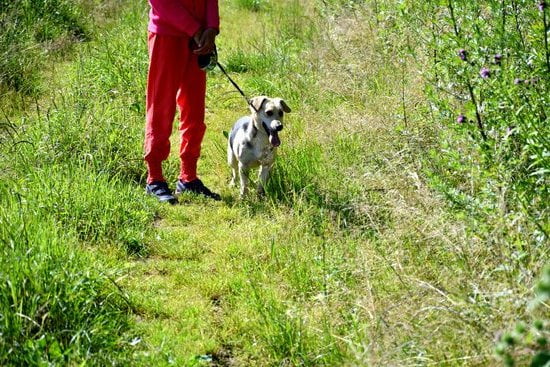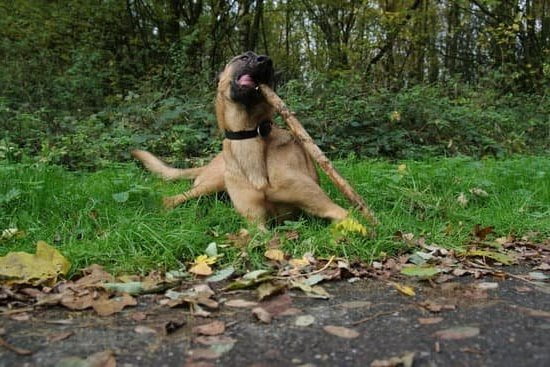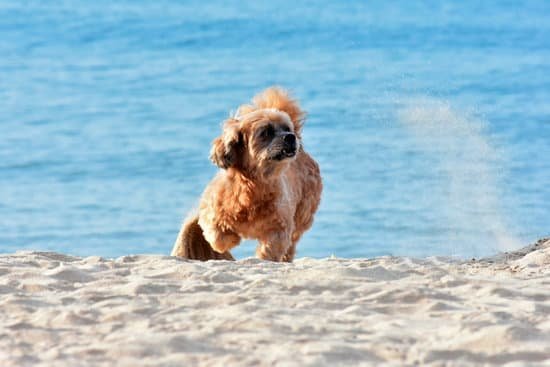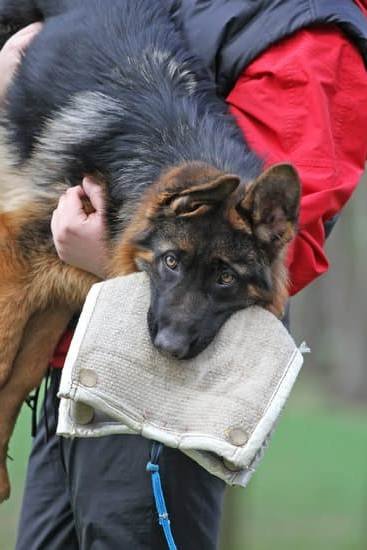Food aggression in dogs can be a concerning behavior that may stem from various underlying reasons. Understanding how to train dog food aggression is essential for the well-being of your pet as it ensures a safe and stress-free feeding environment. By identifying the common signs and triggers of food aggression, pet owners can effectively address this behavior through positive reinforcement training techniques and setting clear boundaries.
Dog food aggression can manifest in behaviors such as growling, snapping, or even biting when approached during mealtime. This aggressive response towards food can be caused by factors like resource guarding, fear, or past experiences. Recognizing these signs early on is crucial in preventing potential conflicts and ensuring a harmonious relationship with your furry companion.
Addressing food aggression in dogs is vital not only for the safety of those around them but also for their own mental and emotional well-being. Creating a safe feeding environment through minimizing triggers and reducing stress during meals can help alleviate food-related anxiety. Through patience, consistency, and seeking professional help when needed, pet owners can effectively manage and prevent food aggression in their beloved pets.
The Importance of Addressing Food Aggression in Dogs
Food aggression in dogs can be a concerning behavior that can impact not only the pet but also their owners. It is crucial to address this issue promptly and effectively for the overall well-being of the dog. Food aggression can stem from various factors such as resource guarding, fear, anxiety, or past experiences. Recognizing the signs of food aggression is the first step in addressing this issue.
Understanding the Impact on Your Dog’s Health
When a dog exhibits food aggression, it can lead to heightened stress levels during mealtimes, which may result in digestive issues or other health problems. Additionally, food aggression can create tension between the dog and its human family members, leading to strained relationships and potential conflicts. By addressing food aggression proactively, you are not only ensuring your pet’s physical health but also their mental well-being.
Promoting a Positive Feeding Experience
Addressing food aggression in dogs is essential for creating a safe and positive feeding environment. Dogs should feel comfortable and relaxed during mealtime, as it contributes to their overall happiness and contentment.
By implementing training techniques that focus on desensitization and positive reinforcement, you can help your dog develop healthier eating habits and eliminate aggressive behaviors around food. Remember that addressing food aggression is not only about preventing conflicts but also about fostering a trusting and harmonious relationship with your canine companion.
Creating a Safe Feeding Environment
Minimizing Triggers
One of the key aspects of addressing dog food aggression is creating a safe feeding environment by minimizing triggers that may lead to aggressive behavior. This can include feeding your dog in a quiet and secluded area away from distractions, such as other pets or loud noises.
Additionally, it’s important to establish a consistent feeding schedule to help reduce anxiety and uncertainty around mealtimes. By removing potential stressors and providing a structured routine, you can help your dog feel more secure and relaxed during mealtime.
Reducing Stress
Another important factor in managing food aggression is reducing stress during mealtime. Dogs may exhibit aggressive behavior around food due to fear, anxiety, or past negative experiences. To help alleviate stress, consider using interactive feeders or puzzle toys to make mealtimes more engaging and mentally stimulating for your dog. You can also practice calm feeding rituals by asking your dog to perform simple commands before receiving their meal, promoting a sense of control and positive reinforcement.
Supervising Mealtime
To further create a safe feeding environment, it’s essential to supervise your dog during mealtimes, especially if they have displayed food aggression in the past. By observing your dog’s behavior around food, you can intervene quickly if any signs of aggression arise and redirect their focus in a positive way.
Additionally, supervising mealtime allows you to reinforce good manners and reward calm behavior with treats or praise. Consistent supervision not only ensures the safety of all household members but also helps reinforce positive associations with food consumption for your dog.
By implementing these tips on minimizing triggers and reducing stress during mealtime, you can create a safe feeding environment that supports your efforts in training your dog out of food aggression. Remember that patience, consistency, and positive reinforcement are key components in helping your pet overcome problematic behaviors around food consumption. With dedication and proper guidance, you can successfully teach your dog healthy eating habits while fostering a harmonious relationship based on trust and respect.
Implementing Positive Reinforcement Training Techniques
Consistency is key when implementing positive reinforcement training techniques for dog food aggression. Make sure to set clear expectations and always reward good behavior while redirecting negative behaviors. Over time, your dog will learn that displaying non-aggressive behavior leads to positive outcomes, making mealtime a more enjoyable experience for both you and your pet.
In addition to using rewards, another effective way to train dog food aggression is by incorporating obedience training into mealtime routines. Teaching basic commands such as “sit” or “stay” can help create structure and establish rules around food. By practicing obedience during mealtimes, you are not only promoting healthy eating habits but also reinforcing positive behaviors that can prevent food aggression in the long run.
| Training Techniques | Details |
|---|---|
| Positive Reinforcement | Use rewards like treats and praise to encourage good behavior around food. |
| Consistency | Set clear expectations and always reward desired behaviors consistently. |
| Obedience Training | Incorporate basic commands into mealtimes to promote structure and prevent food aggression. |
Setting Clear Boundaries
Dog food aggression can be a concerning behavior that impacts not only mealtime but also the overall well-being of your pet. Setting clear boundaries is crucial in addressing this issue effectively and ensuring a safe feeding environment for your dog. By establishing rules and consistency, you can guide your dog’s behavior around food and promote healthy eating habits. Here are some tips on how to train dog food aggression through setting clear boundaries:
- Consistent Feeding Schedule: Establish a regular feeding routine for your dog to create predictability and reduce anxiety around mealtime.
- Designated Feeding Area: Provide a specific location for your dog to eat, away from high-traffic areas or other pets, to minimize distractions and potential conflicts.
- No Begging Allowed: Teach your dog that begging for food is not acceptable by ignoring or redirecting their attention when they exhibit this behavior.
In addition to setting clear boundaries, it is important to ensure that all members of the household follow the same rules when it comes to feeding your dog. Consistency in enforcing these boundaries will help reinforce positive behaviors and discourage food aggression. Remember, patience and persistence are key when training your dog to have healthy eating habits and overcome food-related issues.
- Avoid Food Guarding Triggers: Identify specific triggers that may lead to food aggression in your dog, such as approaching their food bowl while eating, and take steps to avoid these situations.
- Establish Mealtime Rules: Teach your dog to wait calmly before being allowed to eat by practicing commands like “sit” or “stay” before placing their bowl down.
- Use Positive Reinforcement: Reward your dog with praise, treats, or toys when they display calm and appropriate behavior around food, reinforcing positive associations with mealtime.
By setting clear boundaries, implementing consistent rules, and using positive reinforcement techniques, you can effectively train your dog out of food aggression behaviors. Remember that each dog is unique, so be patient and tailor your training approach to suit your pet’s individual needs. If you encounter challenges or see little progress despite your efforts, don’t hesitate to seek guidance from a professional trainer or behaviorist specialized in resolving food aggression issues in dogs.
Seeking Professional Help
When considering when to seek professional help, it’s important to look out for signs that your dog’s food aggression is escalating or becoming unmanageable. This may include aggressive behavior towards people or other animals during mealtime, excessive guarding of food, or displaying fear or anxiety around food. If you notice these behaviors worsening despite your efforts to address them, it’s time to reach out to a qualified expert for assistance.
Consulting a dog trainer or behaviorist for food aggression issues involves collaboration between you, the professional, and your pet. They will work with you to identify triggers that contribute to your dog’s aggression, develop positive reinforcement training techniques tailored to your pet’s needs, and provide ongoing support and guidance throughout the training process. By seeking help from a knowledgeable expert, you can make significant progress in managing and ultimately resolving your dog’s food aggression problem.
- Identify signs of escalating aggression
- Collaborate with the professional on training plan
- Receive ongoing support and guidance
Gradual Exposure and Desensitization
Dog food aggression can be a serious issue that needs to be addressed with patience, consistency, and understanding. One effective way to tackle this problem is through gradual exposure and desensitization techniques. By slowly introducing triggers that usually lead to food aggression in dogs, you can help your pet build confidence and change their behavior around mealtime.
One approach to gradual exposure is to start by identifying specific triggers that set off your dog’s food aggression. This could be other pets approaching while they eat, loud noises during mealtime, or even reaching towards their food bowl. Once you have pinpointed the triggers, you can begin the desensitization process by exposing your dog to these triggers in a controlled environment.
When implementing gradual exposure and desensitization, it is crucial to take it slow and not overwhelm your dog. Start at a distance from the trigger and gradually decrease the distance over time as your dog becomes more comfortable and less reactive.
Remember to always remain calm and patient during this process, as your dog will pick up on your energy and responses. Through consistent practice and positive reinforcement, you can help your furry friend overcome their food aggression issues and develop a healthier relationship with food.
| Gradual Exposure Techniques | Desensitization Tips |
|---|---|
| Identify specific triggers | Start at a distance from the trigger |
| Expose dog in a controlled environment | Gradually decrease distance over time |
| Take it slow and don’t overwhelm | Remain calm and patient throughout |
Monitoring Progress and Celebrating Small Victories
When it comes to addressing food aggression in dogs, monitoring progress and celebrating small victories are key components of the training process. One of the first steps in this journey is to track improvements in your dog’s behavior around food.
This can be done by keeping a journal or log of mealtime interactions, noting any positive changes or setbacks that occur. By actively monitoring progress, you can better understand what strategies are working and where adjustments may need to be made.
Celebrating small victories along the way is also important in reinforcing positive behavior. Whether your dog shows improvement in waiting patiently before eating or displays less aggressive tendencies during mealtime, acknowledging and rewarding these successes can help motivate your pet to continue on the path towards healthy eating habits. This can be as simple as offering verbal praise, a treat, or extra playtime after a successful feeding session.
Furthermore, keeping track of milestones achieved in your dog’s training journey provides a sense of accomplishment for both you and your pet. Whether it’s reaching a specific training goal you set together or seeing gradual improvements over time, recognizing these achievements is essential for maintaining momentum and staying committed to the process of addressing food aggression.
Remember, every step forward, no matter how small, is a reason to celebrate and continue moving forward towards a harmonious feeding routine with your beloved canine companion.
Maintaining a Healthy Feeding Routine
Food aggression in dogs can be a challenging behavior to address, but with patience and the right training techniques, it is possible to manage and even prevent this issue. One effective way to help your dog overcome food aggression is by establishing and maintaining a healthy feeding routine. By following some key tips for long-term success, you can create a positive feeding environment for your pet.
Consistency is key when it comes to maintaining a healthy feeding routine for a dog displaying food aggression. Make sure to feed your dog at the same times each day and in the same location. This helps to create a sense of predictability and security for your pet, reducing stress around mealtimes. Additionally, it’s important to establish clear boundaries during feeding time, such as waiting patiently for their food or not allowing them to approach during mealtime.
Another important aspect of maintaining a healthy feeding routine is monitoring your dog’s progress and celebrating small victories along the way. Keep track of improvements in their behavior around food and acknowledge their efforts with praise or rewards. By consistently reinforcing positive behavior, you can help strengthen the bond between you and your dog while also promoting healthier eating habits.
Remember, seeking professional help from a dog trainer or behaviorist may also be beneficial if you’re struggling to address food aggression effectively on your own. With dedication and the right approach, you can help your dog overcome food aggression and enjoy peaceful mealtimes together.
Frequently Asked Questions
Can You Train Food Aggression Out of a Dog?
Training food aggression out of a dog is possible with patience and consistency. It involves teaching the dog to wait for their food, practicing impulse control, and using positive reinforcement techniques to reward calm behavior around food.
Can Food Aggression in Dogs Be Cured?
Food aggression in dogs can be managed and improved but may not always be completely cured. It requires a combination of training, behavior modification, and creating a safe feeding environment to prevent triggers that lead to aggressive behavior around food.
How Do I Stop My Dog From Being Aggressive on Dog Food?
To stop a dog from being aggressive over food, it’s important to establish yourself as the leader by making the dog earn their meals through obedience commands. Avoid free-feeding and provide structured feeding times to control the situation. Additionally, seek professional help if the aggression persists despite your efforts.

Welcome to the blog! I am a professional dog trainer and have been working with dogs for many years. In this blog, I will be discussing various topics related to dog training, including tips, tricks, and advice. I hope you find this information helpful and informative. Thanks for reading!





